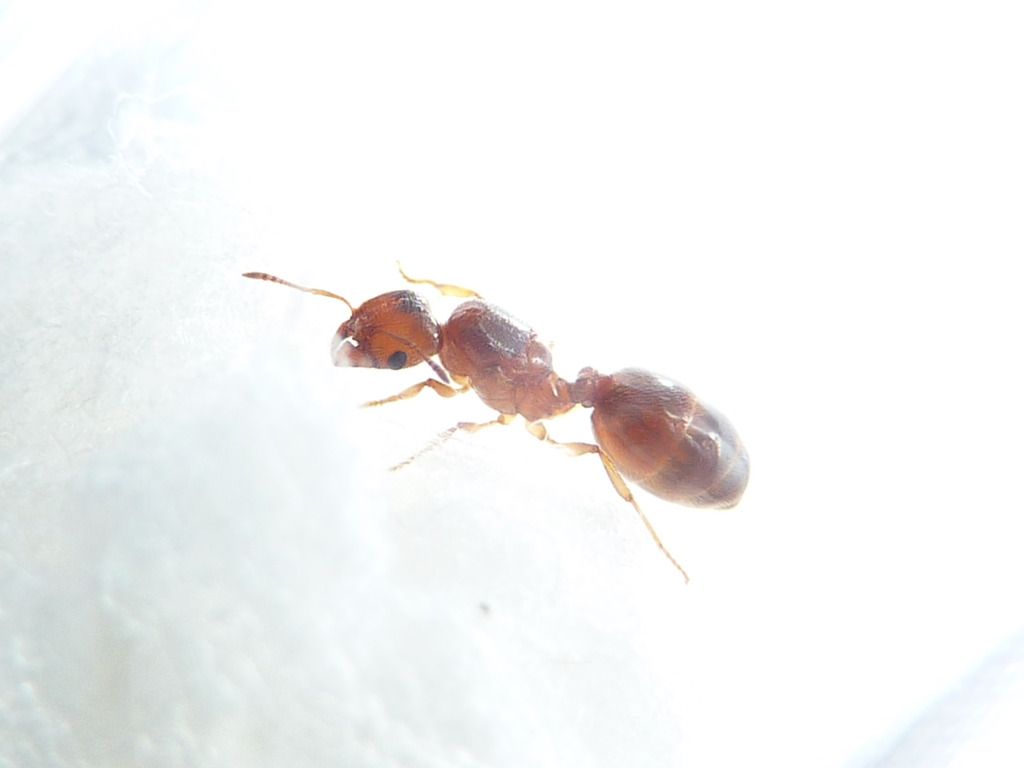1. Location (on a map) of collection: Horsham, Pennsylvania (All six)
2. Date of collection: June 15-June 21 (All at night to a black light, except Queen 6)
3. Habitat of collection: Field/deciduous forest. Mostly clay soil.
4. Length (from head to gaster): Queens 1-5: ~6-6.5 mm, Queen 6: 5 mm
5. Color, hue, pattern and texture: Queens 1-5: Dark brownish red, gasters noticably darker and in some cases even look black. Queen 6 is bright orange, with a smaller form and darker ocelli than Q1-Q5.
6. Distinguishing characteristics: Two petiole nodes on each, ocelli on Q1-Q5 are lighter than rest of body (whitish brown) and ocelli on Q6 are darker.
7. Distinguishing behavior: NA. Queen 5 took about 3 days to lay eggs, now she has a whole bunch.
8. Nest description: NA (black light).
Queen One:





Queen Two:







Queen Three:



Queen Four:





Queen Five:



Queen Six:



Edited by VoidElecent, June 23 2017 - 10:33 AM.
















